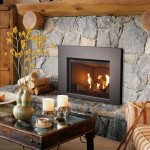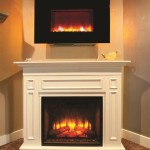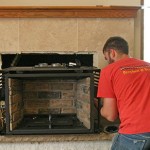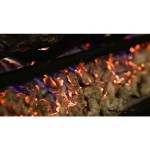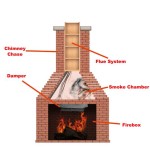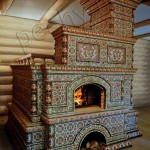```html
Gas Fireplace Designs: A Comprehensive Guide
Gas fireplaces have become increasingly popular for their convenience, efficiency, and aesthetic appeal. Unlike traditional wood-burning fireplaces, gas fireplaces offer instant warmth with minimal effort, eliminating the need to haul wood, clean up ashes, and maintain a chimney. This versatility has fueled a diverse range of designs, catering to varied architectural styles and personal preferences.
The selection of a gas fireplace design requires careful consideration of several factors, including the size of the room, the desired heat output, the existing aesthetic, and the budget. Understanding the various design options available is crucial for making an informed decision that aligns with individual needs and preferences. This article provides a comprehensive overview of gas fireplace designs, exploring the different types, stylistic considerations, and key features to consider.
Types of Gas Fireplace Designs
Gas fireplaces are generally categorized into three main types: built-in, insert, and freestanding. Each type offers distinct advantages and disadvantages, making them suitable for different applications and installations.
Built-in Gas Fireplaces: These fireplaces are designed to be integrated directly into the wall during construction or renovation. They offer a seamless and customized look, often becoming a focal point of the room. Built-in models require professional installation, as they involve framing, venting, and gas line connections. Due to their permanent nature, careful planning is essential to ensure proper sizing and aesthetic integration with the surrounding architecture. Built-in units often allow for the greatest degree of customization in terms of facing materials, mantel designs, and firebox interiors.
Built-in gas fireplaces can be further classified based on their venting system. Direct vent fireplaces draw combustion air from outside the home and exhaust the byproducts of combustion directly outside, eliminating the need for a traditional chimney. Vent-free fireplaces, on the other hand, draw combustion air from inside the room and vent the exhaust directly into the room. While vent-free models offer greater installation flexibility, they are subject to stricter regulations and may not be suitable for all homes, as they can affect indoor air quality. A third type, B-vent fireplaces, use existing chimneys or B-vent pipes for venting.
Gas Fireplace Inserts: These are designed to be installed within an existing masonry fireplace opening. They offer a convenient way to convert a traditional wood-burning fireplace into a gas-fueled one, providing the benefits of gas heat without requiring extensive remodeling. Inserts are typically easier to install than built-in models, as they utilize the existing fireplace structure. However, they may require a liner to be installed in the chimney to ensure proper venting.
Gas fireplace inserts offer a wide range of styles and features, including realistic flame patterns, adjustable heat output, and remote control operation. They are an ideal solution for homeowners who want to maintain the traditional look of a fireplace while enjoying the convenience and efficiency of gas heat.
Freestanding Gas Fireplaces: These are self-contained units that can be placed virtually anywhere in a room with access to a gas line and venting. They offer the greatest installation flexibility, as they do not require an existing fireplace or extensive structural modifications. Freestanding models are available in a variety of styles, ranging from traditional stoves to contemporary designs. They are a popular choice for adding supplemental heat to spaces that lack a traditional fireplace.
Freestanding gas fireplaces often feature a decorative cabinet or surround, which can be customized to match the surrounding decor. They are also available in various sizes and heat outputs, making them suitable for a wide range of room sizes. Venting options for freestanding models include direct vent and vent-free, offering further flexibility in terms of installation.
Stylistic Considerations in Gas Fireplace Design
Beyond the basic types, the aesthetic design of a gas fireplace is crucial in complementing the overall style of the room. Gas fireplaces are available in a wide array of styles, ranging from traditional to contemporary, allowing homeowners to create a focal point that enhances the ambiance of their space.
Traditional Styles: Traditional gas fireplaces often mimic the look of wood-burning fireplaces, featuring ornate mantels, brick or stone surrounds, and realistic log sets. These designs evoke a sense of warmth and nostalgia, creating a cozy and inviting atmosphere. Traditional styles are often characterized by rich wood finishes, intricate detailing, and classic architectural elements. They are well-suited for homes with traditional decor, such as Victorian, Colonial, or Craftsman styles.
Contemporary Styles: Contemporary gas fireplaces embrace clean lines, minimalist designs, and modern materials. They often feature sleek glass fronts, stainless steel accents, and linear burners that create a dramatic flame effect. Contemporary styles are designed to complement modern interiors, such as mid-century modern, minimalist, or industrial styles. They often incorporate features such as remote control operation, adjustable flame height, and accent lighting.
Transitional Styles: Transitional gas fireplaces blend elements of both traditional and contemporary styles, creating a versatile look that can complement a wide range of decors. They often feature simplified mantels, neutral color palettes, and a balance of classic and modern elements. Transitional styles are a popular choice for homeowners who want a fireplace that is both timeless and stylish.
Linear Fireplaces: Linear gas fireplaces are characterized by their long, horizontal flame display, creating a visually striking focal point. They are often installed in modern homes and offer a clean, contemporary aesthetic. Linear fireplaces can be built-in or freestanding and are available in various lengths, allowing for customization to fit the specific dimensions of the room. They are often paired with minimalist mantels or no mantel at all, emphasizing the clean lines of the design.
Fireplace Surrounds and Mantels: The surround and mantel of a gas fireplace play a significant role in defining its style. Surrounds can be made from a variety of materials, including brick, stone, tile, wood, or metal. The choice of material will depend on the desired aesthetic and the overall style of the room. Mantels provide a decorative shelf above the fireplace, which can be used to display photos, artwork, or other accessories. Mantels can be made from wood, stone, or metal and can range from simple, minimalist designs to ornate, traditional styles.
Key Features to Consider
Beyond the type and style, several key features should be considered when selecting a gas fireplace. These features affect the performance, efficiency, and overall user experience of the fireplace.
Heat Output: The heat output of a gas fireplace is measured in British thermal units (BTUs). The appropriate BTU rating will depend on the size of the room and the desired level of warmth. A larger room will require a higher BTU rating to effectively heat the space. Factors such as insulation and climate should also be considered when determining the appropriate heat output. Overly powerful fireplaces can lead to discomfort and energy inefficiency, while underpowered ones may not provide adequate heat.
Venting Options: As previously mentioned, gas fireplaces are available with various venting options, including direct vent, vent-free, and B-vent. Direct vent fireplaces are the safest and most efficient option, as they draw combustion air from outside the home and exhaust the byproducts of combustion directly outside. Vent-free fireplaces offer greater installation flexibility but may affect indoor air quality. B-vent fireplaces utilize existing chimneys or B-vent pipes for venting.
Flame Appearance: The appearance of the flames is a crucial factor in the overall aesthetic of a gas fireplace. Modern gas fireplaces offer realistic flame patterns that mimic the look of a wood-burning fire. Features such as adjustable flame height and ember beds can further enhance the realism of the flame effect. The type of burner technology also affects the flame appearance, with some burners producing taller, more flickering flames than others.
Energy Efficiency: The energy efficiency of a gas fireplace is measured by its AFUE (Annual Fuel Utilization Efficiency) rating. A higher AFUE rating indicates greater energy efficiency. Direct vent fireplaces generally have higher AFUE ratings than vent-free models. Features such as electronic ignition and thermostat control can also improve energy efficiency.
Safety Features: Safety is a paramount consideration when selecting a gas fireplace. Look for models that include safety features such as oxygen depletion sensors (ODS), which automatically shut off the gas supply if the oxygen level in the room drops too low. Child safety screens are also important to prevent accidental burns. Professional installation is essential to ensure that the fireplace is installed correctly and safely.
Remote Control and Smart Features: Many modern gas fireplaces come equipped with remote control operation, allowing for convenient control of the flame height, heat output, and other settings. Some models also offer smart features, such as Wi-Fi connectivity, which allows you to control the fireplace from your smartphone or other devices. These features offer added convenience and customization.
Selecting the right gas fireplace design involves a thorough understanding of the available options and careful consideration of individual needs and preferences. By considering the type, style, and key features discussed in this article, homeowners can make an informed decision and choose a gas fireplace that provides both warmth and aesthetic appeal for years to come.
```
7 Fireplace Surround Ideas That Will Ignite The Room

2024 Gas Fireplace Trends Design Regency

26 Contemporary Gas Fireplaces Ideas Fireplace

C60 Tall Linear Gas Fireplace Stamford Fireplaces

6 Stunning Contemporary Gas Fireplace Ideas

Bespoke Gas Fireplace Designs Living Flame

40 Fabulous Fireplace Design Ideas For Any Budget Or Style

Fireplace Design Ideas Exemplar Inspiration On Houzz Montigo
Custom Luxury Gas Fireplace Designs Stellar

40 Best Gas Fireplace Designs To Elevate Your Decor In 2024 Design Insert
Related Posts

